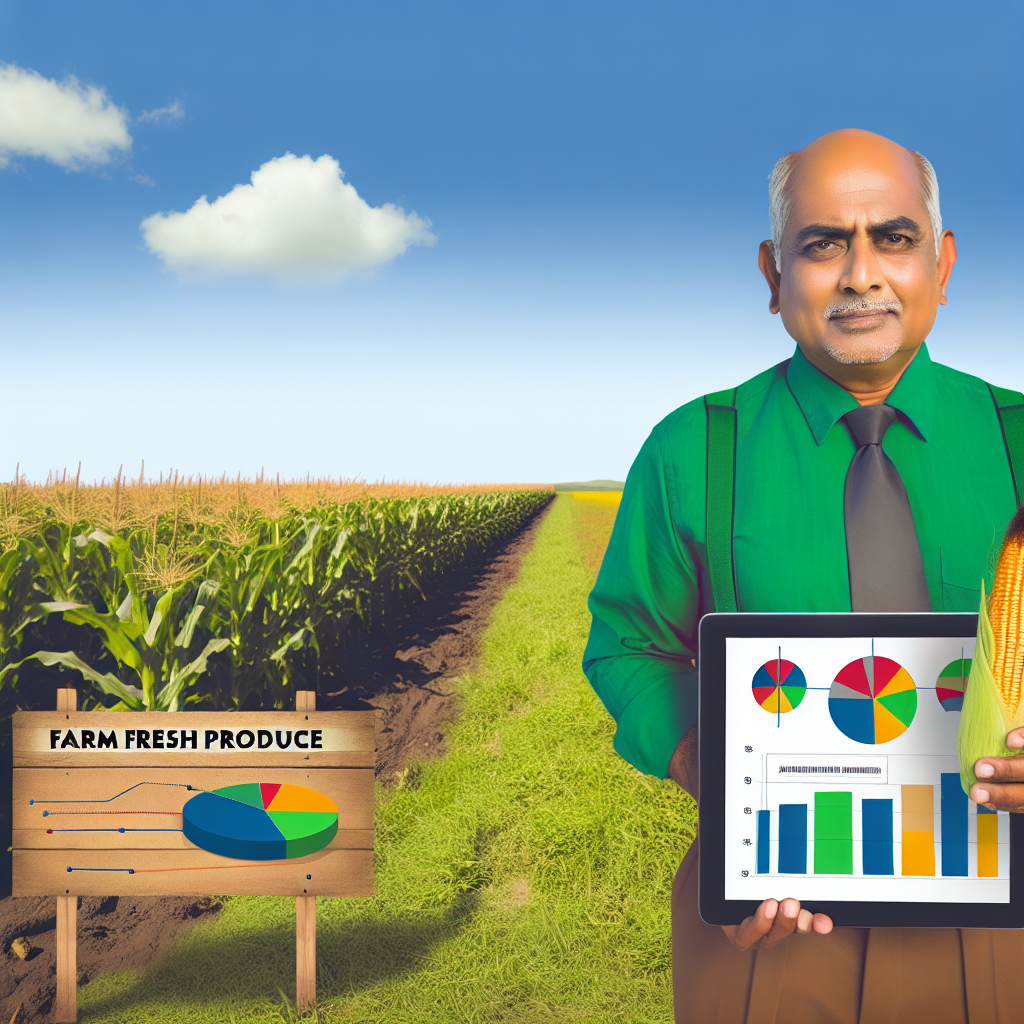Understanding Your Target Market
Identifying Buyer Personas in Agribusiness
Identifying buyer personas is crucial for effective agribusiness marketing.
These personas represent different customer segments you aim to reach.
Start by gathering demographic information on your target market.
Consider age, gender, location, and income levels.
This foundational data helps you segment your audience better.
Creating Detailed Buyer Personas
Once you have demographic data, delve deeper into behaviors.
Understand the buying habits and preferences of your customers.
Use surveys and interviews to gather insights from real customers.
Pay attention to what influences their purchasing decisions.
Identify common pain points that your products can solve.
Segmenting Your Market Effectively
Segmentation allows for a more targeted marketing strategy.
Use the buyer personas to categorize your customers into groups.
Consider segmenting by type of farming, scale, or crop type.
This approach helps tailor your messaging for each segment.
Personalization increases engagement and sales opportunities.
Transform Your Agribusiness
Unlock your farm's potential with expert advice tailored to your needs. Get actionable steps that drive real results.
Get StartedUtilizing Buyer Personas in Marketing Strategies
Leverage the information from your buyer personas in your marketing campaigns.
Create content that speaks directly to your target audience’s needs.
Utilize social media platforms where your audience is most active.
Engage with customers through email marketing and online ads.
Monitor your results and adjust strategies as needed.
Continuously Updating Buyer Personas
Market trends and customer preferences change over time.
Make it a priority to review and update your buyer personas regularly.
Gather feedback and analyze sales data for new insights.
This process ensures your marketing always remains effective.
Ultimately, understanding buyer personas enhances your agribusiness success.
Digital Marketing Strategies: Leveraging Social Media for Farm Products
Understanding Social Media Platforms
Farmers can effectively use social media to promote their products.
Different platforms serve various purposes and audiences.
For instance, Instagram is ideal for showcasing beautiful farm images.
Facebook offers a robust community for engaging with local customers.
Twitter allows quick updates and industry news sharing.
Creating Engaging Content
High-quality visuals capture attention on social media.
Farmers should post vibrant pictures of their produce.
Behind-the-scenes videos can create a personal connection.
Storytelling is crucial for building brand identity.
Content should reflect the farm’s values and mission.
Implementing Targeted Advertising
Social media advertising can reach specific demographics.
Farmers can target local customers seeking fresh products.
Using geolocation features can enhance ad effectiveness.
Allocate budget wisely for maximum outreach.
Showcase Your Farming Business
Publish your professional farming services profile on our blog for a one-time fee of $200 and reach a dedicated audience of farmers and agribusiness owners.
Publish Your ProfileBuilding a Community
Engaging with followers fosters loyalty and trust.
Host contests and giveaways to encourage participation.
Respond promptly to comments and messages.
Share user-generated content to highlight satisfied customers.
Networking with Other Farmers
Collaboration can enhance visibility and reach.
Farmers can form networks to share resources and support each other.
Participating in online farming groups can offer valuable insights.
Share best practices and experiences with peers.
Measuring Success
Analytics tools can track engagement and growth.
Farmers should monitor which posts perform best.
Adjust strategies based on audience feedback and data.
Continuous learning is essential for social media success.
Building a Brand: Crafting a Unique Identity for Your Farming Business
Understanding Your Market
Begin by researching your target audience.
Identify their needs, preferences, and buying habits.
Additionally, analyze competitors to find market gaps.
Developing Your Brand Message
Create a clear and compelling brand message.
This message should resonate with your audience.
Focus on your unique selling proposition.
Moreover, ensure that it reflects your values and vision.
Designing Your Brand Identity
Your brand identity includes your logo, colors, and fonts.
Choose elements that convey your message effectively.
For instance, earthy colors may suggest sustainability.
Consistency is key in all brand materials.
Creating a Strong Online Presence
Establish a professional website to showcase your brand.
Utilize social media to connect with customers.
Engage with audiences through informative content.
Videos and blogs can highlight your farming techniques.
Building Relationships with Customers
Personalize interactions with your customers.
Address their concerns and encourage feedback.
Customer loyalty strengthens your brand’s reputation.
Consider hosting events to enhance community engagement.
Leveraging Marketing Channels
Identify the most effective marketing channels for your brand.
Social media, email marketing, and local events are great options.
Utilize imagery and stories to enhance your messaging.
Furthermore, measure the effectiveness of your campaigns.
Evaluating and Adapting Your Brand Strategy
Regularly assess your brand strategy and its effectiveness.
Make adjustments based on customer feedback and market trends.
Adaptability is crucial in a changing agricultural landscape.
Stay responsive to new opportunities and challenges.
Learn More: Overcoming Challenges in Farm Succession Planning
Showcase Your Farming Business
Publish your professional farming services profile on our blog for a one-time fee of $200 and reach a dedicated audience of farmers and agribusiness owners.
Publish Your ProfileContent Marketing: Creating Valuable Content to Engage Customers
The Importance of Content Marketing
Content marketing plays a crucial role in agribusiness today.
It helps farmers connect with their target audience effectively.
Moreover, it builds trust through valuable information sharing.
Identifying Your Audience
Understanding your audience is the first step in content marketing.
Start by defining who your customers are.
Consider factors such as age, location, and interests.
Next, research their needs and preferences.
This insight helps tailor your content to attract them.
Types of Content to Create
Farmers can create various types of engaging content.
- Blog posts that offer insights and tips.
- Videos showcasing farming techniques or product usage.
- Infographics that simplify complex information.
- Newsletters that keep customers informed about updates.
- Culinary recipes that inspire consumers to use your products.
Utilizing Social Media Platforms
Social media platforms are fantastic tools for content distribution.
They allow farmers to reach wider audiences quickly.
Using channels like Instagram and Facebook can showcase your farm visually.
Regular posts keep your audience engaged and connected.
Search Engine Optimization (SEO) Strategies
Implementing SEO strategies can enhance content visibility online.
Use relevant keywords to help customers find your content easily.
Optimize your website for better mobile accessibility.
This ensures your content reaches a larger audience effectively.
Engaging with Your Audience
Engagement drives meaningful interactions with your audience.
Respond to comments and questions promptly on social media.
Encourage feedback to create a dialogue with customers.
Utilizing polls and surveys can also enhance engagement.
Measuring the Success of Content Marketing
Measuring your success is vital for refining your strategy.
Track metrics such as website traffic and engagement rates.
Analyzing these metrics helps identify what content resonates most.
Adapt your approach based on these insights for better results.
Learn More: Creating a Strong Online Presence for Farmers
Utilizing Email Marketing: Nurturing Relationships with Subscribers
Importance of Email Marketing
Email marketing remains a powerful tool for farmers.
It allows direct communication with customers.
Moreover, it fosters strong relationships over time.
Regular updates keep subscribers engaged and informed.
Building a Subscriber List
Your subscriber list is the foundation of effective email marketing.
Start by creating a signup form on your website.
Encourage visitors to subscribe by offering incentives.
For instance, provide exclusive content or discounts.
Promote your signup form through social media platforms.
Crafting Engaging Content
Your emails should provide value to your subscribers.
Consider sharing farming tips, market trends, or seasonal updates.
Visual content, such as pictures and videos, enhances engagement.
Additionally, personal stories can resonate deeply with readers.
Consistent Communication
Establish a regular schedule for your email campaigns.
Showcase Your Farming Business
Publish your professional farming services profile on our blog for a one-time fee of $200 and reach a dedicated audience of farmers and agribusiness owners.
Publish Your ProfileWhether weekly or monthly, consistency is key.
This helps set expectations for your subscribers.
Always ensure your content aligns with their interests.
Analyzing Performance
Track the performance of your email campaigns.
Open rates and click-through rates are essential metrics.
Utilize this data to refine your strategies over time.
Experiment with different subject lines and content strategies.
See Related Content: Building Customer Loyalty in Agribusiness

Effective Pricing Strategies
Understanding Cost Structure
Every farmer must understand their cost structure to set effective prices.
Analyze fixed and variable costs associated with production.
Fixed costs remain constant, regardless of production levels.
Variable costs fluctuate with production activity.
Identifying these costs helps in calculating the breakeven point.
Furthermore, knowledge of the breakeven point guides pricing strategies.
Breakdown costs into manageable categories for clearer analysis.
This structured approach enhances decision-making capabilities.
Analyzing Competitor Pricing
Competitor pricing analysis is essential for any successful agribusiness.
Start by gathering data on competitors’ prices for similar products.
Use online tools or local market research for accurate information.
Compare your prices with those of your competitors.
Assess whether to position your pricing above, below, or at industry standards.
Consider your unique selling proposition when setting prices.
This makes your products more appealing in a competitive landscape.
Developing Competitive Price Points
Establish competitive price points that attract customers while covering costs.
Consider implementing various pricing strategies.
- Value-based pricing focuses on perceived customer value.
- Cost-plus pricing adds a standard markup to total costs.
- Penetration pricing introduces low prices to attract market share.
Choose a strategy that aligns with your business goals and market conditions.
Experiment with promotional pricing to stimulate sales during peak seasons.
Incorporating Seasonal Adjustments
Adjust prices seasonally based on market demand and supply.
During high-demand periods, consider increasing prices moderately.
Lower prices during off-peak seasons can clear inventory effectively.
Monitor market trends to make data-driven pricing decisions.
Always remain flexible and responsive to market changes.
You Might Also Like: Building Long-Term Strategic Partnerships In Farming
Networking and Partnerships
Collaborating with Other Farmers
Networking with fellow farmers can enhance your agribusiness.
Establishing strong connections opens new opportunities.
Consider joining local farming associations or cooperatives.
These groups facilitate collaboration and resource sharing.
By working together, farmers can reduce costs effectively.
Additionally, sharing knowledge leads to better practices.
Building Relationships with Stakeholders
Engaging stakeholders is essential in agribusiness marketing.
Showcase Your Farming Business
Publish your professional farming services profile on our blog for a one-time fee of $200 and reach a dedicated audience of farmers and agribusiness owners.
Publish Your ProfileIdentify key stakeholders like suppliers and distributors.
Regular communication fosters trust and understanding.
Participate in industry events to meet potential partners.
Networking at trade shows can lead to beneficial alliances.
Invite stakeholders to visit your farm to showcase your practices.
Leveraging Social Media and Online Platforms
Use social media to connect with other farmers.
Platforms like Facebook and Instagram provide exposure.
Share your farm’s story to attract a wider audience.
Engage in online forums to exchange ideas and resources.
Consider joining agricultural-focused online communities.
Creating Mutually Beneficial Partnerships
Form partnerships that benefit all parties involved.
Identify shared goals with other farmers or businesses.
Collaborate on marketing efforts to reach broader markets.
Joint ventures can lead to cost savings and increased exposure.
Evaluate the success of partnerships regularly to make adjustments.
Data Analysis: Using Analytics to Drive Marketing Decisions and Improve Outreach
Introduction to Data Analytics
Data analytics is essential for modern agribusiness marketing.
It involves collecting and analyzing data to make informed decisions.
Farmers can leverage insights to target their audiences effectively.
Understanding Customer Preferences
Analyzing consumer behavior helps farmers understand their preferences.
Farmers can use surveys and feedback forms to gather data.
This information allows for tailored marketing strategies.
For instance, knowing what products appeal to customers can boost sales.
Improving Marketing Strategies
Analytics provides insights on the effectiveness of marketing campaigns.
Farmers should track metrics like engagement and conversion rates.
These insights identify strengths and weaknesses in their strategies.
Adapting campaigns based on data can lead to higher success rates.
Targeting the Right Audience
Segmentation is a key benefit of data analysis.
Farmers can classify their audience based on demographics or purchasing behavior.
This classification enables more personalized marketing approaches.
For example, targeting eco-conscious consumers can enhance brand loyalty.
Utilizing Technology for Data Collection
Farmers should use various tools for data collection.
Mobile apps and software can streamline the process.
These tools allow for real-time data monitoring and analysis.
Investing in technology can yield significant returns in marketing efforts.
Measuring ROI on Marketing Efforts
Understanding return on investment (ROI) is crucial.
Farmers should measure the cost-effectiveness of their marketing activities.
Analyzing sales data helps determine which strategies are most profitable.
Adjusting marketing budgets based on performance can optimize spending.
Implementing Predictive Analytics
Predictive analytics can forecast future trends and demands.
This strategy equips farmers to prepare for market changes.
Showcase Your Farming Business
Publish your professional farming services profile on our blog for a one-time fee of $200 and reach a dedicated audience of farmers and agribusiness owners.
Publish Your ProfileUsing historical data, they can anticipate what consumers might need.
This proactive approach reduces risk and enhances competitiveness.
Additional Resources
Risk in Agriculture – USDA ERS
Census of Agriculture: USDA – National Agricultural Statistics Service




